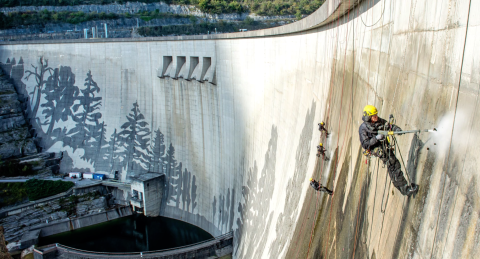
Sustainability: Kärcher reduces ecological footprint
In 2021, Kärcher reduced its production-related emissions by 18 percent. The reduction is part of their Sustainability Strategy 2025. To achieve its goals, the German cleaning multinational relies on a three-pillar approach.
In its recently published sustainability report, Kärcher presents its corporate figures for last year. The numbers are certainly impressive. Kärcher is active in 150 companies in more than 80 countries around the world. Furthermore, the multinational claims it employs more than 14,400 people.
More than 50,000 service points have been set up in all countries for customer service. According to Kärcher, 2021 was the strongest year in the company’s history in terms of sales, with around 3.092 billion euros.
“At the end of the day, economic success is not a prerequisite for sustainability, but sustainability is a prerequisite for economic success.” says Hartmut Jenner, Chairman of the Board of Management of Alfred Kärcher SE & Co. KG.
Three pillars
The first pillar of the ‘Zero Emissions’ sustainability strategy concerns production-related emissions. Here, Kärcher 2021 recorded significant successes. Since last year, Kärcher’s global production is CO₂-neutral. Until 2025 they plan to further lower their complete CO₂ footprint by 21 percent, followed by another 21 percent until 2030. On top of that, 180,000 hectares of forest area have been protected to date through compensation payments.
The second pillar of the strategy concerns the handling of raw materials and product materials. Kärcher has already been supporting projects to reduce ocean plastics since 2020.
By 2025, all product packaging has to be optimized for sustainability. Furthermore, half of the packaging for selected consumer and professional appliances should be made of ecycled plastic by then. In three years time, Kärcher says it is aiming for pilot production without plastic waste and making sustainability an essential component of new business models.
Finally, the third pillar of the sustainability strategy is about social commitment. By 2025, Kärcher’s focus in the area of social commitment will be on value preservation. To date, 68 percent of all projects have already been focused on value preservation. 14 monuments and buildings were cleaned as part of cultural sponsorship in 2021.
By 2025, Kärcher plans to establish a supplier management system in which all suppliers are assessed for sustainability, reduce emissions in transport logistics and give preference to regional suppliers.
Emergence of the sustainability strategy
According to the company, Kärcher’s Sustainability Strategy 2025 was developed in intensive dialog with its employees. Among other things, they were involved in three workshops in Brazil, China and Germany in 2019, during which more than 400 ideas were collected. The customer perspective was also taken into account with a representative customer survey in the USA, Germany, France, Brazil and Japan.
Also read:



